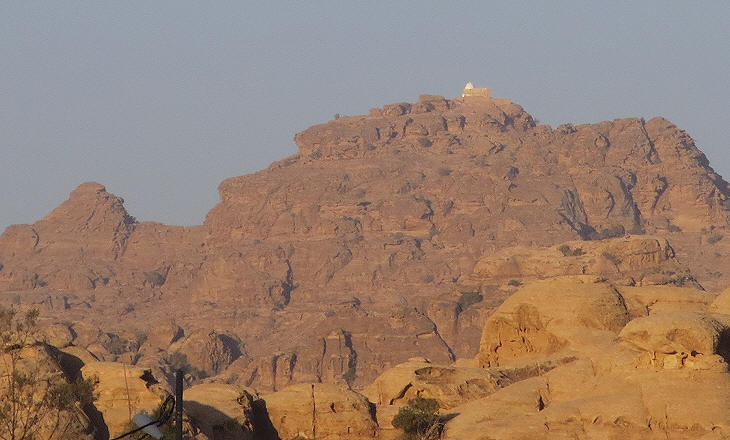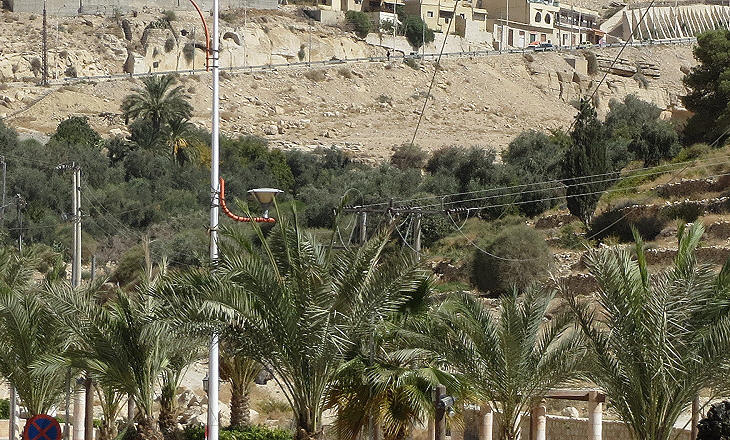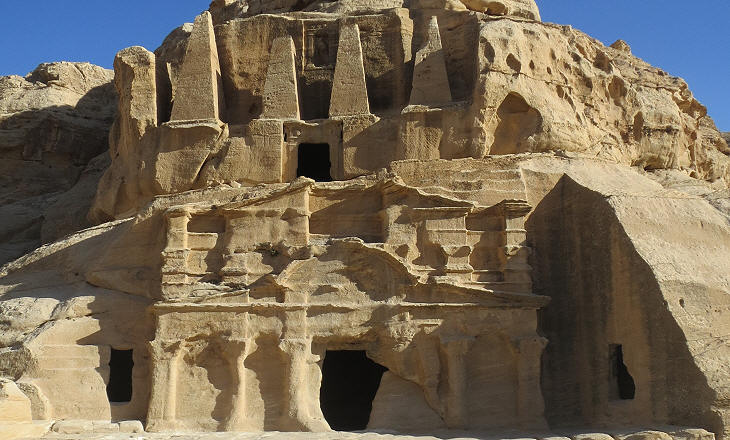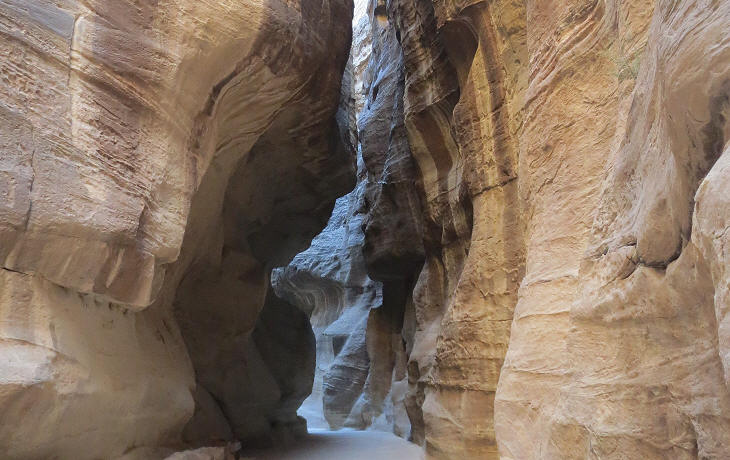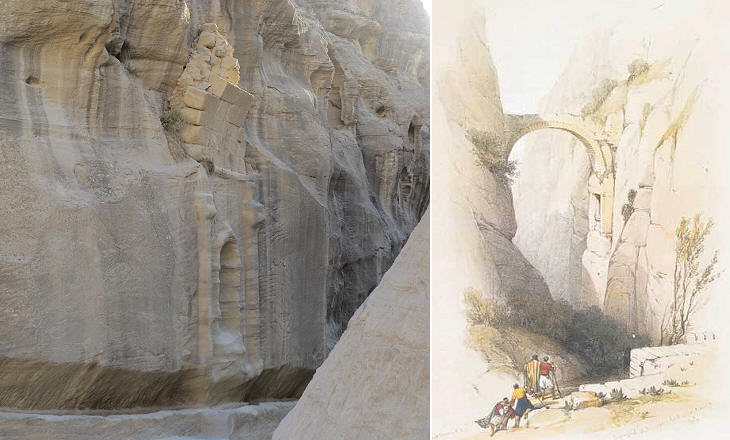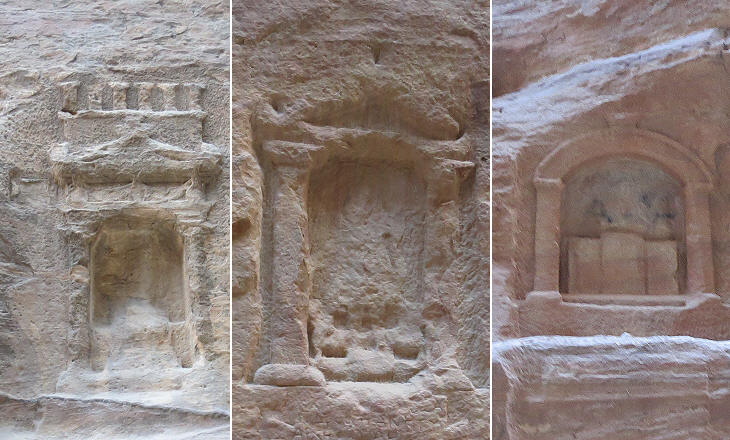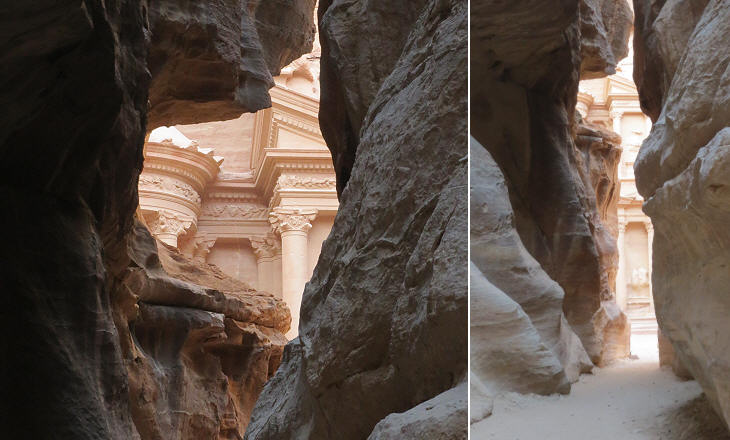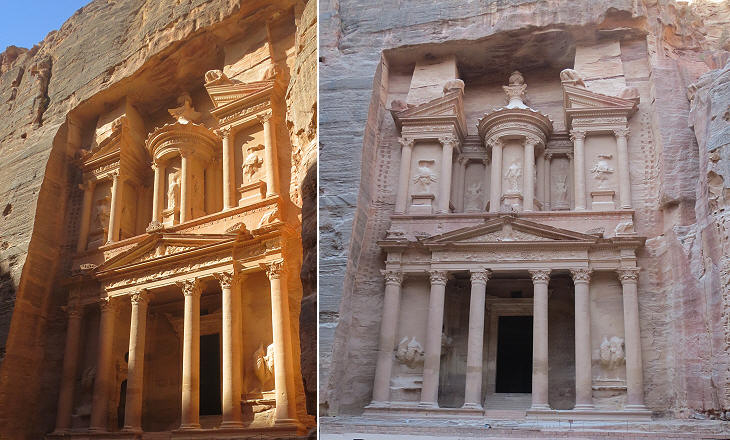  What's New! Detailed Sitemap All images © by Roberto Piperno, owner of the domain. Write to romapip@quipo.it. Text edited by Rosamie Moore. Page added in November 2013. |
 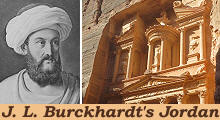 - Petra in Burckhardt's account - part one - Petra in Burckhardt's account - part one(left: J. L. Burckhardt in Arab attire in a XIXth century engraving; right: the Treasury of Petra) If you came to this page directly, you might wish to read a page with an introduction to this section first. Johann Ludwig Burckhardt (1784-1819), the Swiss explorer who was the first European to visit the ruins of Petra, wrote an exciting account of what he saw, which is reported in this page with only minor edits and notes. Comments, additional images and coverage of monuments Burckhardt did not see can be found in separate pages. August 22nd 1812 - I was particularly desirous of visiting Wady Mousa (Moses' valley), of the antiquities of which I had heard the country people speak in terms of great admiration. Upon the summit of the mountain near the spot where the road to Wady Mousa diverges from the great road to Akaba, are a number of small heaps of stones, indicating so many sacrifices to Haroun (Aaron, Moses' brother). The Arabs who make vows to slaughter a victim to Haroun, think it sufficient to proceed as far as this place, from whence the dome of the tomb is visible in the distance; and after killing the animal they throw a heap of stones over the blood which flows to the ground. Here my guide pressed me to slaughter the goat which I had brought with me from Showbak, for the purpose, but I pretended that I had vowed to immolate it at the tomb itself. J. L. Burckhardt - Travels in Syria and the Holy Land - 1822
Upon a hill over the Ain (spring) Mousa the Arabs Lyathene (a Bedouin tribe) were encamped, who cultivate the valley of Mousa. We repaired to their encampment, but were not so hospitably received as we had been the night before. Ain Mousa is a copious spring, rushing from under a rock at the eastern extremity of Wady Mousa. (..) Proceeding from the spring along the rivulet for about twenty minutes, the valley opens, and leads into a plain about a quarter of an hour in length and ten minutes in breadth, in which the rivulet joins with another descending from the mountain to the southward. Upon the declivity of the mountain, in the angle formed by the junction of the two rivulets, stands Eldjy, the principal village of Wady Mousa. This place contains between two and three hundred houses, and is enclosed by a stone wall with three regular gates. It is most picturesquely situated, and is inhabited by the Lyathene abovementioned, a part of whom encamp during the whole year in the neighbouring mountains. The slopes of the mountain near the town are formed into artificial terraces, covered with corn fields and plantations of fruit trees. They are irrigated by the waters of the two rivulets and of many smaller springs which descend into the valley below Eldjy, where the soil is also well cultivated.
I hired a guide at Eldjy, to conduct me to Haroun’s tomb, and paid him with a pair of old horse-shoes. He carried the goat, and gave me a skin of water to carry, as he knew that there was no water in the Wady below. In following the rivulet of Eldjy westwards the valley soon narrows again; and it is here that the antiquities of Wady Mousa begin. Of these I regret that I am not able to give a very complete account: but I knew well the character of the people around me; I was without protection in the midst of a desert where no traveller had ever before been seen; and a close examination of these works of the infidels, as they are called, would have excited suspicions that I was a magician in search of treasures; I should at least have been detained and prevented from prosecuting my journey to Egypt, and in all probability should have been stripped of the little money which I possessed, and what was infinitely more valuable to me, of my journal book. Future travellers may visit the spot under the protection of an armed force; the inhabitants will become more accustomed to the researches of strangers; and the antiquities of Wady Mousa will then be found to rank amongst the most curious remains of ancient art. At the point where the valley becomes narrow is a large sepulchral vault, with a handsome door hewn in the rock on the slope of the hill which rises from the right bank of the torrent: on the same side of the rivulet, a little farther on, I saw some other sepulchres with singular ornaments. Here a mass of rock has been insulated from the mountain by an excavation, which leaves a passage five or six paces in breadth between it and the mountain. It forms nearly a cube of sixteen feet, the top being a little narrower than the base; the lower part is hollowed into a small sepulchral cave with a low door; but the upper part of the mass is solid. There are three of these mausolea at a short distance from each other.
A few paces lower, on the left side of the stream, is a larger mausoleum similarly formed, which appears from its decayed state, and the style of its architecture, to be of more ancient date than the others. Over its entrance are four obelisks, about ten feet in height, cut out of the same piece of rock; below is a projecting ornament, but so much defaced by time that I was unable to discover what it had originally represented; it had, however, nothing of the Egyptian style.
Continuing for about three hundred paces farther along the valley, which is in this part about one hundred and fifty feet in breadth, several small tombs are met with on both sides of the rivulet, excavated in the rock, without any ornaments. Beyond these is a spot where the valley seemed to be entirely closed by high rocks; but upon a nearer approach, I perceived a chasm about fifteen or twenty feet in breadth, through which the rivulet flows westwards in winter; in summer its waters are lost in the sand and gravel before they reach the opening, which is called El Syk. The precipices on either side of the torrent are about eighty-feet in height; in many places the opening between them at top is less than at bottom, and the sky is not visible from below.
As the rivulet of Wady Mousa must have been of the greatest importance to the inhabitants of the valley, and more particularly of the city, which was entirely situated on the west side of the Syk, great pains seem to have been taken by the ancients to regulate its course. Its bed appears to have been covered with a stone pavement, of which many vestiges yet remain, and in several places stone walls were constructed on both sides, to give the water its proper direction, and to check the violence of the torrent. A channel was likewise cut on each side of the Syk, on a higher level than the river, to convey a constant supply of water into the city in all seasons, and to prevent all the water from being absorbed in summer by the broad torrent bed, or by the irrigation of the fields in the valley above the Syk.
About fifty paces below the entrance of the Syk a bridge of one arch thrown over the top of the chasm is still entire; immediately below it, on both sides, are large niches worked in the rock, with elegant sculptures, destined probably for the reception of statues. Some remains of antiquities might perhaps be found on the top of the rocks near the bridge; but my guide assured me, that notwithstanding repeated endeavours had been made, nobody had ever been able to climb up the rocks to the bridge, which was therefore unanimously declared to be the work of the Djan (Djinni), or evil genii.
In continuing along the winding passage of the Syk, I saw in several places small niches cut in the rock, some of which were single; in other places there were three or four together, without any regularity; some are mere holes, others have short pilasters on both sides; they vary in size from ten inches to four or five feet in height; and in some of them the bases of statues are still visible.
An excavated mausoleum came in view, the situation and beauty of which are calculated to make an extraordinary impression upon the traveller, after having traversed for nearly half an hour such a gloomy and almost subterraneous passage as I have described. The natives call this monument Kaszr Faraoun, or Pharaoh’s castle; and pretend that it was the residence of a prince. But it was rather the sepulchre of a prince, and great must have been the opulence of a city, which could dedicate such monuments to the memory of its rulers.
It is one of the most elegant remains of antiquity existing in Syria; its state of preservation resembles that of a building recently finished, and on a closer examination I found it to be a work of immense labour. The colonnade is about thirty-five feet high, and the columns are about three feet in diameter with Corinthian capitals. The pilasters at the two extremities of the colonnade, and the two columns nearest to them, are formed out of the solid rock, like all the rest of the monument, but the two centre columns, one of which has fallen, were constructed separately, and were composed of three pieces each. The colonnade is crowned with a pediment, above which are other ornaments, which, if I distinguished them correctly, consisted of an insulated cylinder crowned with a vase, standing between two other structures in the shape of small temples, supported by short pillars. The entire front, from the base of the columns to the top of the ornaments, may be sixty or sixty-five feet.
The principal part is a chamber sixteen paces square, and about twenty-five feet high. There is not the smallest ornament on the walls, which are quite smooth, as well as the roof, but the outside of the entrance door is richly embellished with architectural decorations. Several broad steps lead up to the entrance, and in front of all is a colonnade of four columns, standing between two pilasters. (..) The doors of the two apartments opening into the vestibule are covered with carvings richer and more beautiful than those on the door of the principal chamber. The exterior wall of the chamber at each end of the vestibule, which presents itself to the front between the pilaster and the neighbouring column, was ornamented with colossal figures in bas-relief; but I could not make out what they represented. One of them appears to have been a female mounted upon an animal, which, from the tail and hind leg, appears to have been a camel.
The image used as background for this page shows a narrow point of the Syk. Move to page two. Move to: Introductory Page Ajlun Castle and Pella (May 3rd, 1812) Amman and its environs (July 7th, 1812) Aqaba "Castles" in the Desert (incl. Qasr el-Azraq) Jerash (May 2nd, 1812) Madaba (July 13th, 1812) Mt. Nebo and the Dead Sea (July 14th, 1812) On the Road to Petra (incl. Kerak and Showbak) (July 14th - August 19th, 1812) Umm al-Jimal Umm Qays (May 5th, 1812)  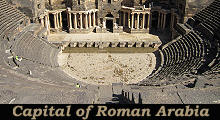 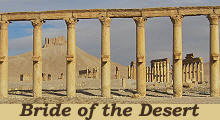 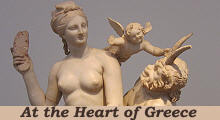
|
